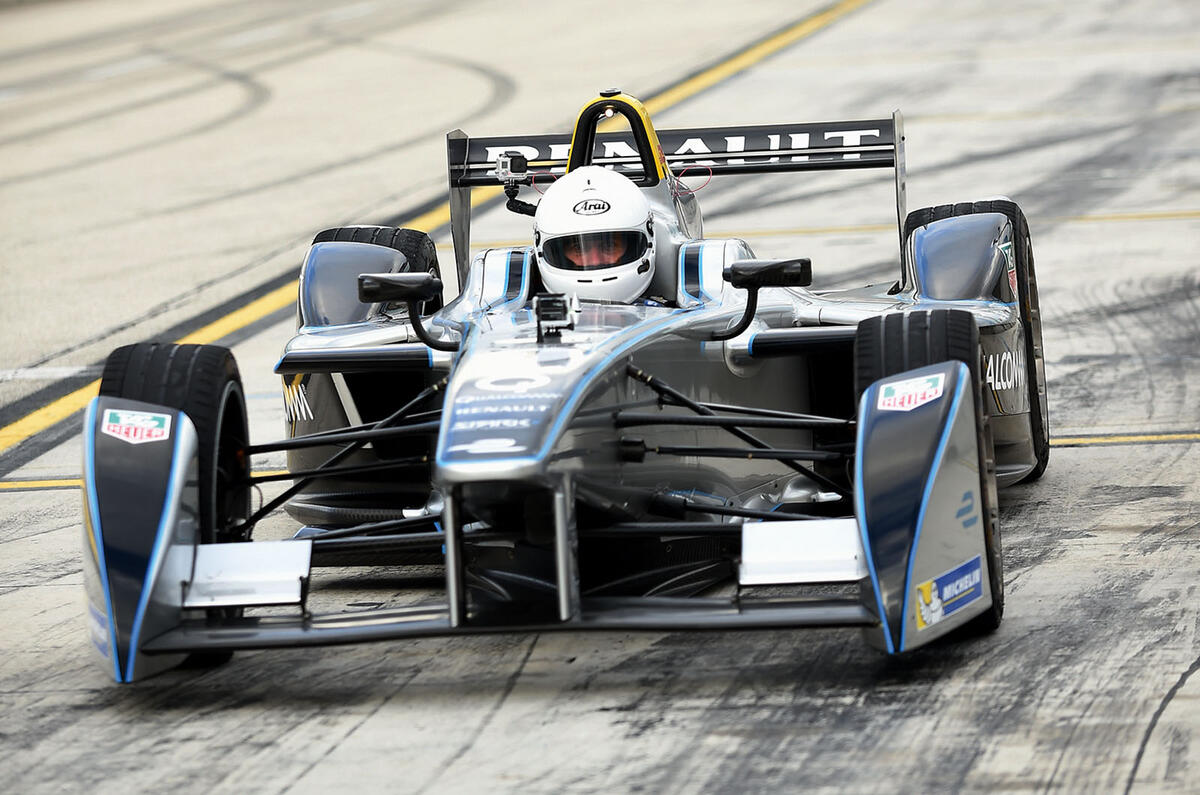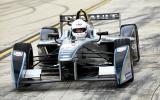Homestead-Miami Speedway usually echoes to the roar of Nascar V8s and 65,000 adoring fans.
That might explain why every marshal I whisper past in my electric racing car looks more than a little bemused. This Formula E machine may be an eye-catching winner, but the Florida marshals are scratching their heads. Where’s the growl of an 850bhp Hemi, spitting fire and high octane from every tailpipe?
It’s true that Formula E doesn’t offer ear-splitting decibels, but after experiencing the inside of the cockpit at 140mph, I can tell you that it still screams pure excitement.
I’ve travelled 4500 miles from London to the Sunshine State to be the first British journalist to drive a Formula E car in the US. This may be the land of the free, but strict public liability laws mean I’m not allowed to drive on the Miami road circuit currently being fenced off in the city centre. (The Miami ePrix was eventually won by Nicolas Prost.)
Instead, I’m hurtling around the 2.2-mile road course at Homestead, which incorporates some of the banked oval of the Nascar circuit. With 14 bends and full-throttle curves, it’s pure adrenalin for rookies like me.
As I pass the pit lane flat out, the advice of my mentor, former Formula 1 driver Nelson Piquet Junior, is still ringing in my helmet: “Be careful of the carbon brakes. They’re very strong and easy to lock. Heat them up slowly, which sometimes means braking early into a corner.”
Comparisons with an F1 car are obvious. It’s tough keeping my head still because of the wind buffeting my helmet. The cockpit has all the comforts of a medieval torture chamber and I’m developing Popeye’s forearms in trying to hit the apex of every curve.
I drove an F1 car in 2001 and struggled to cope with the bottomless pit of power on tap. And although Formula E cars can be catapulted to 60mph in three seconds, the 800kW battery developed by Williams provides more than enough kick to keep it wildly entertaining.
Even braking late into a second-gear hairpin, the set of 18in Michelin tyres glue the car to the track. As I accelerate onto the straight, a handful of spent rubber bounces over my crash helmet and HANS (head and neck support) device.
I’m on lap five and it’s only the four paddles on my detachable steering wheel that still require some mastering. They’re so close together that it’s easy to squeeze the wrong one – especially on an uneven stretch of Homestead asphalt.








































































































Join the debate
Add your comment
Formula E
The biggest problem with electric cars is range, especially when driven at speed and they get round this in Formula E by – changing cars at half distance!! If only you could do that with a Nissan Leaf on the M1!
Also, have you noticed that none of the 'tracks' used have ever had any other kind of race held on them? Just imagine how these racers would look if they ran somewhere where you could compare the speeds with real racing cars.
re easeaton
Well, if noise isn't